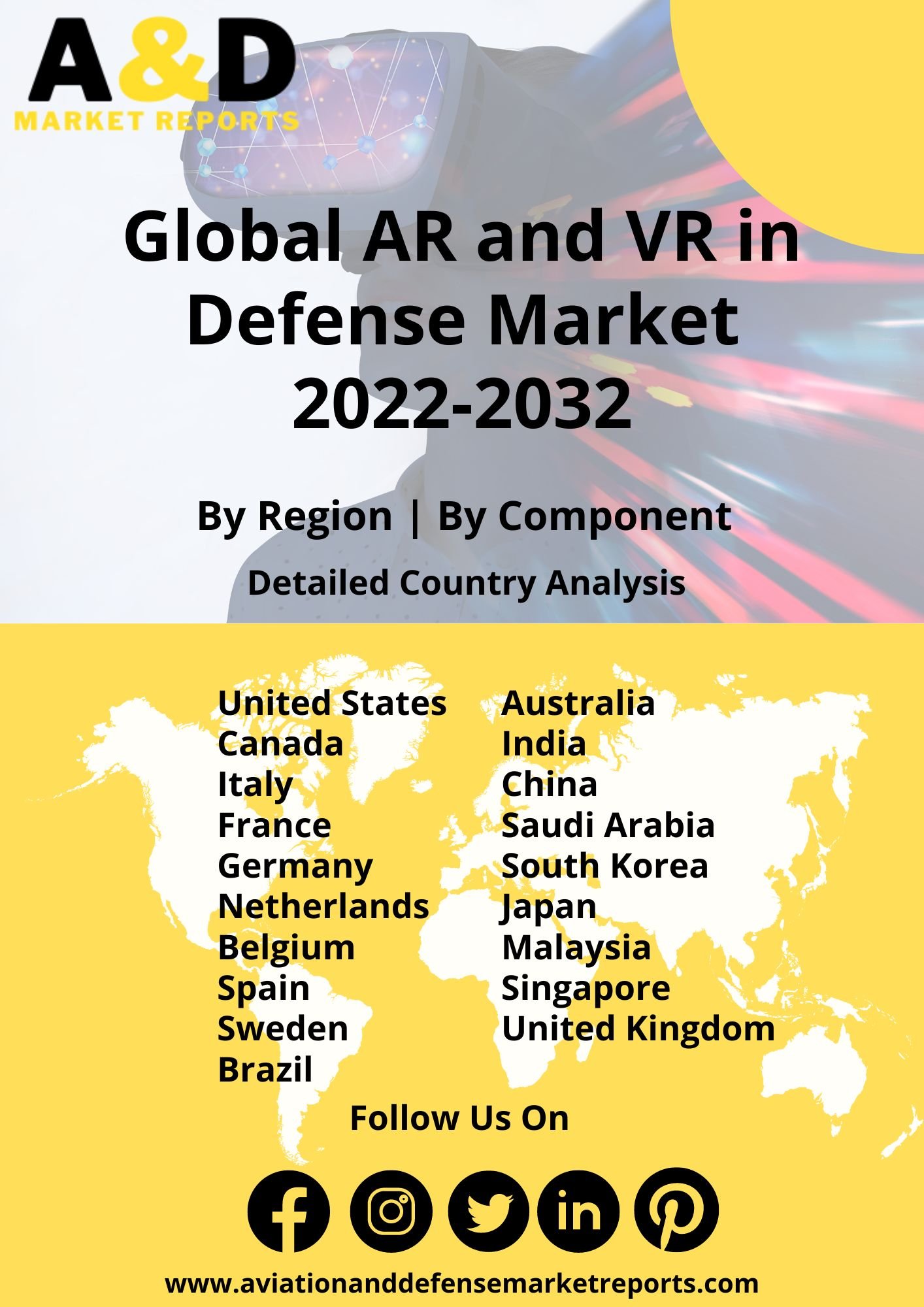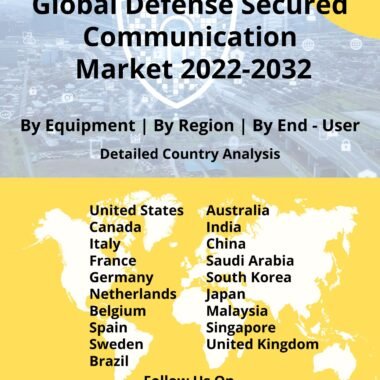Description
Global AR & VR Defense Market
Frequently Asked Questions of AR and VR in Defense Market
AR and VR defense market have been used for equipment training, flying training, and weapon training in military operations all around the world for a long time. These resources can significantly lower the cost of preparing soldiers for situations that cannot be duplicated outside of actual warfare. The way that the military trains has been significantly impacted by recent breakthroughs in AR and VR. Technology is being used by AR and VR developers to make concepts of combat a reality.
HUD, also known as Enhanced Night Vision Goggles, is an AR tool that gives soldiers a superior night vision as well as tactical intelligence, such as the location of enemy or ally forces, as an overlay. The apparatus includes a targeting reticle that is wirelessly connected to the gun and displays the soldier’s point of aim. Because they are expensive, war-games, where armies can practice fighting one another, are rarely held. HUD technology is being used by soldiers in training as a less expensive substitute. A new generation of HUDs that can be customized, lightweight, strong, and small, is currently being developed. Due to the difference between what a squad leader should see and what a typical shooter must view, the latter aspect is crucial for AR gadgets.
There is widespread acceptance of the benefits of using AR and VR in military training. According to a research by the Official Naval Research, non-gamers have less developed visual fields, perform poorer at remembering visual objects, and absorb new information more slowly than gamers. Because of this, scientists think that game-like simulations made possible by AR and VR can considerably improve cognitive capacities and align virtual training with real-world activities. Leaders who oversee operations and send soldiers into the field benefit from AR and VR as well. Because augmented reality devices project real-time information onto their visors, they can obtain a better perspective on massive tasks.
Major factors driving AR & VR Defense Market Growth
Training and simulation for troops will be the major driver for the growth of AR and VR in the defense market size. Though initial development and procurement cost can be high, the operational cost is low compared to conventional training strategies. which in turn increases AR and VR in Defense market size
Trends influencing the AR VR Defense Market Size
The AR and VR in Defense market growth are made possible by 5G’s extremely low latency and tremendous bandwidth. Private 5G solutions ensure that applications receive the capabilities needed to carry out mission-critical processes for many defense and industrial customers, whereas public 5G networks either do not provide sufficient coverage, do not deliver a specific capability to the required level, or are deemed insufficiently secure. Private 5G networks have advantages in terms of security, latency, bandwidth, and other factors because they are owned by and operated entirely on the premises of a private entity. Hence proliferation of 5G network will be one of the key technologies that will influence the AR and VR in Defense market growth.
AR VR Defense Market Forecast & Dynamics
AR and VR in Defense market forecast, increasing need for advanced AR and VR in training and simulation will be the primary driver of the market. AR and VR in Defense market analysis, increasing defense budgets due to geo-political tensions in Europe, North America, and Asia Pacific region will aid the procurement of AR and VR systems.
AR & VR Defense Market Analysis for Recent Developments
AR and VR in Defense market reports, with a US defense contractor, Kopin obtains a $2M development contract for an in-vehicle display imaging system. AR and VR in Defense market reports, a US prime defense contractor recently announced that Kopin Corporation, a supplier of high-resolution micro displays and sub-systems for augmented reality (AR) and virtual reality (VR) for use in defense, enterprise, and consumer applications, had been given a contract to create a new in-vehicle display imaging system.
AR and VR in Defense market analysis, this is the second in-vehicle defense development contract that Kopin has received, according to the business, and it underscores recent efforts to penetrate the market. Due in part to its design and manufacturing expertise in precise display solutions for soldier-centric weapon sights, targeting systems, and pilot helmets for fixed and rotary aircraft, Kopin already has a foothold in US defense applications.
As it looks to improve its combat ability, the Indian military, which has long relied on state-owned businesses for its defense equipment needs, is increasingly utilizing goods created by entrepreneurs using AR and VR in Defense market trends. The military forces are working with startups on projects ranging from pilot instruction to aircraft repair, improving weapon efficiency, and even hardening tanks for battle AR and VR in Defense market trends; One example is a see-through suit of armor created by Mumbai-based AR/VR startup AjnaLens, which raised $12 crore in pre-series a funding last month. The technology, known as AjnaESAS (enhanced situational awareness system), has a 360-degree camera and an AR-based head-mounted display that gives the crew inside a tank a 360-degree horizontal field of view. There is a night mode.
The market stands at the forefront of transformative technologies, reshaping the landscape of military training, simulation, and operational planning. AR and VR technologies offer immersive and realistic environments that enhance training experiences, allowing defense personnel to simulate complex scenarios and improve decision-making skills in a risk-free setting. The market is experiencing significant growth, driven by the increasing recognition of AR and VR as indispensable tools for enhancing situational awareness, mission planning, and soldier readiness. Advanced headsets, haptic feedback devices, and realistic simulations contribute to the effectiveness of AR and VR applications in defense.
Technological innovations within the AR and VR Defense market include the integration of artificial intelligence, gesture recognition, and spatial mapping, providing more realistic and interactive training environments. These innovations facilitate not only individual and collective training but also contribute to mission planning and operational decision support.
Geopolitical considerations play a crucial role in shaping market dynamics, with nations strategically investing in AR and VR Defense capabilities to ensure their defense forces are equipped with cutting-edge training and simulation tools. In 2023, the global AR and VR Defense market signify a commitment to leveraging immersive technologies for enhanced preparedness, strategic planning, and operational effectiveness in the ever-evolving landscape of modern warfare.
![Global_AR_&_VR_Defense_Market_2024-2034[1] Global_AR_&_VR_Defense_Market_](https://aviationanddefensemarketreports.com/wp-content/uploads/2022/08/Global_AR__VR_Defense_Market_2024-20341.jpg)






